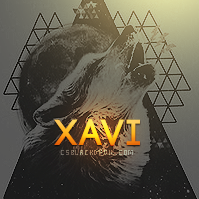TumHiAanaMarjaavaan128Kbps.mp3
00:00/00:00
- TumHiAanaMarjaavaan128Kbps.mp3
- Sia_-_Unstoppable_CeeNaija.com_.mp3
- vincenzo_ringtone.mp3
About Horror_Professional
- Birthday September 2
Title
-
Manager HighlifeZM-)
Contact
-
YouTube
https://www.youtube.com/@Horror-D12
-
Discord
horror_xd__08935
Informations
-
Steam
HoRRoR_695
-
Gender
Male
-
Interests
Gaming/Series
-
City
Pakistan,Islamabad
Recent Profile Visitors
1,457 profile views
Horror_Professional's Achievements
-
BS Angela started following Horror_Professional
-
Horror_Professional started following BS Angela
-
Horror_Professional changed their profile photo
-
Still miss server,VOTED!
-
Np , VOTED!
-
Horror_Professional started following Fr3Ssh
-
VOTED!
-
VOTED!
-
Hitman is a stealth game franchise created by Danish developer IO Interactive. The player controls the contract killer Agent 47, who travels the world to assassinate various targets who are assigned to him. The first game in the franchise, Hitman: Codename 47, was published by Eidos Interactive for Microsoft Windows in 2000 and introduced many of the gameplay elements that would become staples of the franchise. Eidos published the next three games, Hitman 2: Silent Assassin (2002), Hitman: Contracts (2004), and Hitman: Blood Money (2006), for Windows and consoles, each building upon Codename 47's foundation of stealth gameplay. After a six-year hiatus, Hitman: Absolution (2012) was published, and a high-definition port of the original three console games in 2013, both by Square Enix. After another hiatus from the main series, the next game titled Hitman (2016) was released, also published by Square Enix. Hitman 2 (2018) was published by Warner Bros. Games, which later published HD ports of Hitman: Blood Money and Hitman: Absolution (2019). The most recent main series game, Hitman 3 (2021), was self-published by IO Interactive. In 2023, IO rebranded Hitman 3 as Hitman: World of Assassination, which imported all content of the previous two titles to the game. Feral Interactive published Hitman: Blood Money - Reprisal for mobile platforms the same year. Mainline games in the Hitman series have been generally well-received, with most critics praising the take on stealth gameplay and freedom of approach. Outside of the eight mainline releases, the franchise includes three spin-off games, two novels, remastered and HD rereleases of games, and a comic book miniseries, and two film adaptations: Hitman (2007) and Hitman: Agent 47. In 1998, following the dissolution of Danish game developer Zyrinx, its remaining team members regrouped to form Reto-Moto.[5] This team later established IO Interactive (IO), which would go on to create its first intellectual property, the Hitman series. The inaugural game, Hitman: Codename 47, marked IO's debut in the gaming industry. Initially, the studio had planned to develop a straightforward shooter titled Rex-Domonius, but the concept was ultimately abandoned by Reto-Moto.[5] The creative vision for Hitman: Codename 47 was led by Danish designer Jacob Andersen, who drew inspiration from Hong Kong action films. Andersen explained, "We decided to do a quick game inspired by Hong Kong action movies... Basically, a guy in a suit blasting away in a Chinese restaurant."[5] This initial idea evolved into the story of Agent 47, a genetically engineered clone assassin. The game introduced a unique gameplay mechanic where players could assume disguises from non-player characters, a feature that became a hallmark of the series and set Hitman apart from other games of its time.[5] Additionally, Codename 47 was among the first games to incorporate ragdoll physics, which enhanced its realism and set a new standard for the industry.[6] Published by Eidos Interactive in 2000, Codename 47 was initially released exclusively for Windows. Andersen noted that the decision to focus on PC development was driven by the difficulty of obtaining console development kits at the time, as well as the growing availability of 3D hardware for PCs, which made the platform particularly appealing for innovation.[5]. The first sequel in the series, Hitman 2: Silent Assassin, was developed by IO Interactive and published by Eidos Interactive for Microsoft Windows, PlayStation 2, and Xbox in October 2002, followed by a GameCube release in June 2003. Building upon the foundation of Codename 47, Silent Assassin placed greater emphasis on stealth mechanics and introduced new features, such as a first-person view mode, the ability to incapacitate enemies non-lethally, and missions that allowed for multiple approaches.[5] Reflecting on the development, Jacob Andersen noted, "Now that the main platform was PS2, we felt more at home." However, some fans of the original game were dissatisfied with the introduction of a mid-level save system. While the controls were improved and efforts were made to address AI issues, non-player characters continued to exhibit unpredictable behavior. "Many have tried to fix the AI since, and all have failed," Andersen remarked with a smile. "It just has to have those odd moments—otherwise, it wouldn't be Hitman."[5] The next installment, Hitman: Contracts, was developed by IO and published by Eidos Interactive for Microsoft Windows, PlayStation 2, and Xbox in April 2004. The game served as both a sequel to Silent Assassin and a partial remake of Codename 47, featuring remastered levels from the first game with enhanced graphics, improved AI, and gameplay elements introduced in the second game. This decision was influenced by the fact that only 10% of Silent Assassin players had experienced Codename 47, largely due to the latter's Windows exclusivity. As Andersen explained, "We decided to make Hitman 2.5 with some of the best content from [Codename 47]."[7] Hitman: Blood Money, developed by IO and published by Eidos Interactive, was released for Microsoft Windows, PlayStation 2, Xbox, and Xbox 360 in May 2006. Developed concurrently with its predecessor, Blood Money continued the story from the previous installment and represented a significant leap forward in terms of graphics, AI, and level design, thanks to increased resources from both IO and Eidos.[7] The game received generally positive reviews and is widely regarded as a cult classic.[8] Blood Money has been re-released multiple times: first as part of an HD collection alongside its two predecessors in 2013,[9] again in 2019 as part of another HD collection with its successor,[10] and most recently for mobile devices in 2023[11] and the Nintendo Switch in 2024.[12] A box set titled Hitman Trilogy (released as Hitman: The Triple Hit Pack in Europe) was published by Eidos for the PlayStation 2 on June 19, 2007, in North America and June 22, 2007, in Europe.[13][14] The collection includes Hitman 2: Silent Assassin, Hitman: Contracts, and Hitman: Blood Money, with the games remaining identical to their original standalone releases.[13] Following the release of Blood Money, IO Interactive shifted its focus to developing new franchises, including the action-packed Kane & Lynch series (2007 and 2010) and the more family-friendly Mini Ninjas (2009). https://en.wikipedia.org/wiki/Hitman_(franchise)
-
Blender was initially developed as an in-house application by the Dutch animation studio NeoGeo (no relation to the video game brand), and was officially launched on January 2, 1994.[13] Version 1.00 was released in January 1995,[14] with the primary author being the company co-owner and software developer Ton Roosendaal. The name Blender was inspired by a song by the Swiss electronic band Yello, from the album Baby, which NeoGeo used in its showreel.[15][16][17] Some design choices and experiences for Blender were carried over from an earlier software application, called Traces, that Roosendaal developed for NeoGeo on the Commodore Amiga platform during the 1987–1991 period.[18] On January 1, 1998, Blender was released publicly online as SGI freeware.[1] NeoGeo was later dissolved, and its client contracts were taken over by another company. After NeoGeo's dissolution, Ton Roosendaal founded Not a Number Technologies (NaN, a reference to the computing term of the same name) in June 1998 to further develop Blender, initially distributing it as shareware until NaN went bankrupt in 2002. This also resulted in the discontinuation of Blender's development.[19] In May 2002, Roosendaal started the non-profit Blender Foundation, with the first goal to find a way to continue developing and promoting Blender as a community-based open-source project. On July 18, 2002, Roosendaal started the "Free Blender" campaign, a crowdfunding precursor.[20][21] The campaign aimed at open-sourcing Blender for a one-time payment of €100,000 (USD 100,670 at the time), with the money being collected from the community.[22] On September 7, 2002, it was announced that they had collected enough funds and would release the Blender source code. Today, Blender is free and open-source software, largely developed by its community as well as 26 full-time employees and 12 freelancers employed by the Blender Institute.[23] The Blender Foundation initially reserved the right to use dual licensing so that, in addition to GPL 2.0-or-later, Blender would have been available also under the "Blender License", which did not require disclosing source code but required payments to the Blender Foundation. However, this option was never exercised and was suspended indefinitely in 2005.[24] Blender is solely available under "GNU GPLv2 or any later" and was not updated to the GPLv3, as "no evident benefits" were seen.[25] The binary releases of Blender are under GNU GPLv3 or later because of the incorporated Apache libraries.[26] In 2019, with the release of version 2.80, the integrated game engine for making and prototyping video games was removed; Blender's developers recommended that users migrate to more powerful open source game engines such as Godot instead.[27][28]. In February 2002, the fate of the Blender software company, NaN, became evident as it faced imminent closure in March. Nevertheless, one more release was pushed out, Blender 2.25. As a sort of Easter egg and last personal tag, the artists and developers decided to add a 3D model of a chimpanzee head (called a "monkey" in the software). It was created by Willem-Paul van Overbruggen (SLiD3), who named it Suzanne, after the orangutan in the Kevin Smith film Jay and Silent Bob Strike Back.[29] Suzanne is Blender's alternative to more common test models such as the Utah Teapot and the Stanford Bunny. A low-polygon model with only 500 faces, Suzanne is included in Blender and often used as a quick and easy way to test materials, animations, rigs, textures, and lighting setups. It is as easily added to a scene as primitives such as a cube or plane.[30] The largest Blender contest gives out an award called the Suzanne Award,[31] underscoring the significance of this unique 3D model in the Blender community. Blender has a node graph system for procedurally and non-destructively creating and mani[CENSORED]ting geometry. It was first added to Blender 2.92, which focuses on object scattering and instancing.[33] It takes the form of a modifier, so it can be stacked over other different modifiers.[34] The system uses object attributes, which can be modified and overridden with string inputs. Attributes can include positions, normals and UV maps.[35] All attributes can be viewed in an attribute spreadsheet editor.[36] The Geometry Nodes utility also has the capability of creating primitive meshes.[37] In Blender 3.0, support for creating and modifying curves objects was added to Geometry Nodes;[38] in the same release, the Geometry Nodes workflow was completely redesigned with fields, in order to make the system more intuitive and work like shader nodes.[39][40]. https://en.wikipedia.org/wiki/Blender_(software)
-
JAiZZYZZEROCOAAL, started following Horror_Professional
-
VOTED!
-
Kawasaki Motors, Ltd. (カワサキモータース株式会社, Kawasaki Mōtāsu Kabushikigaisha) is a Japanese mobility manufacturer that produces motorcycles, all-terrain vehicles, utility vehicles, watercraft, outboard motors, and other electric products. It derives its origins from Kawasaki Aircraft Industries, a subsidiary of Kawasaki Heavy Industries, and is rooted in the motorcycle, boat, and engine businesses. In 1953, they began manufacturing engines for motorcycles and have since produced products such as the Mach and Ninja series in motorcycles and the Jet Ski, which has become a generic term for personal watercraft. Until 2021, it was a division of Kawasaki Heavy Industries, known as the Kawasaki Aerospace Company (川策重工業汎用機カンパニー) and later the Kawasaki Motorcycle & Engine Company (川崎重工業モーターサイクル&エンジンカンパニー). In 2021, it was separated as Kawasaki Motors, Ltd, a wholly owned subsidiary of Kawasaki Heavy Industries. Kawasaki Aircraft initially manufactured motorcycles under the Meguro name, having bought an ailing motorcycle manufacturer, Meguro Manufacturing with whom they had been in partnership. This eventually became Kawasaki Motor Sales.[3] Some early motorcycles display an emblem with "Kawasaki Aircraft" on the fuel tank. During 1962, Kawasaki engineers were developing a four-stroke engine for small cars. Then some of the engineers transferred to the Meguro factory to work on the Meg ro K1 and the SG, a single cylinder 250 cc OHV. In 1963, Kawasaki and Meguro merged to form Kawasaki Motorcycle Co., Ltd.[4][5] From 1962 through 1967, Kawasaki motorcycles used an emblem which can be described as a flag within a wing. Work continued on the Meguro K1, a copy of the BSA A7 500 cc vertical twin[6] and on the W1. The K2 was exported to the U.S. for a test in response to the expanding American market for four-stroke motorcycles. At first it was rejected for a lack of power. By the mid-1960s, Kawasaki was finally exporting a moderate number of motorcycles. The Kawasaki H1 Mach III in 1968, along with several enduro-styled motorcycles to compete with Yamaha, Suzuki and Honda, increased sales of Kawasaki units. 1974 saw the establishment of a Kawasaki assembly facility in Lincoln, Nebraska, US, named the American Kawasaki Motors Corporation (KMC), to complete Japan-produced components into finished motorcycles for the North American market.[7][8] Kawasaki's engines division, housed in a single office complex in Grand Rapids, Michigan, consolidates research and development projects . . Kawasaki's first title was with Dave Simmonds in 1969 when they won the 125 cc World Championship. Kawasaki dominated the 250 cc and 350 cc grand prix classes from 1978 to 1982 winning four titles in each category. With the introduction of the four-stroke engines into MotoGP in 2002, Kawasaki decided to take part in the new MotoGP World Championship. Kawasaki entered the championship in 2003 with 250 cc Grand Prix racer Harald Eckl's Team Eckl. In 2003, the Kawasaki Racing Team was formed after Kawasaki had developed their new 990cc ZX-RR bike throughout 2002 and raced it in the last three races of the 2002 MotoGP season. The racing activities were managed by Harald Eckl's team based in Germany. It was not until 2004 that Kawasaki had two riders - Alex Hofmann and Shinya Nakano, who raced for the entire season. Nakano placed 3rd in Japan that year achieving Kawasaki's first podium finish in MotoGP.[13] In 2007, Kawasaki split from Harald Eckl because of Eckl's involvement with a competitor's MotoGP activities, which forced Kawasaki to terminate the relationship immediately.[14] Kawasaki formed Kawasaki Motors Racing, a European subsidiary of Kawasaki Heavy Industries responsible for managing the racing activities of the MotoGP team and any other motorcycle racing activities Kawasaki may enter in the future. For the first time since Kawasaki returned to the premier class of motorcycle racing, the team became a complete 'in house' factory team. On January 9, 2009, Kawasaki announced it had decided to "... suspend its MotoGP racing activities from 2009 season onward and reallocate management resources more efficiently". The company stated that it will continue racing activities using mass-produced motorcycles as well as supporting general race oriented consumers. In 1973, Kawasaki introduced a limited production of stand-up models as designed by the recognized inventor of jet skis, Clayton Jacobson II.[11] In 1976, Kawasaki then began mass production of the JS400-A. JS400s came with 400 cc two-stroke engines and hulls based upon the previous limited release models. It became the harbinger of the success Jet-Skis would see in the market up through the 1990s. In 1986 Kawasaki broadened the world of Jet Skis by introducing a two-person model with lean-in "sport" style handling and a 650 cc engine, dubbed the Kawasaki X2. Then in 1989, they introduced their first two-passenger "sit-down" model, the Tandem Sport (TS) with a step-through seating area. In 2003, Kawasaki celebrated the Jet Ski brand by releasing a special 30th anniversary edition of its current stand-up model, the SX-R, which has seen a revival of interest in stand-up jetskiing. The X-2 has also been updated, based on the SX-R platform and re-released in Japan. Kawasaki continues to produce three models of sit-downs, including many four-stroke models. The four stroke engines have come on since the late 1990s; with the help of superchargers and the like the engines can output up to 300 horsepower (220 kW) as seen in the Kawasaki Ultra 300x. https://en.wikipedia.org/wiki/Kawasaki_Motors










